
Steak Doneness rare steak, medium rare, medium, medium well, well done The life pile
Rare Steak Medium-Rare Medium Medium-Well Well-Done Rest Your Steak Grilling a steak may seem like a simple task, but there is actually some finesse to getting it right—especially when it comes to doneness.
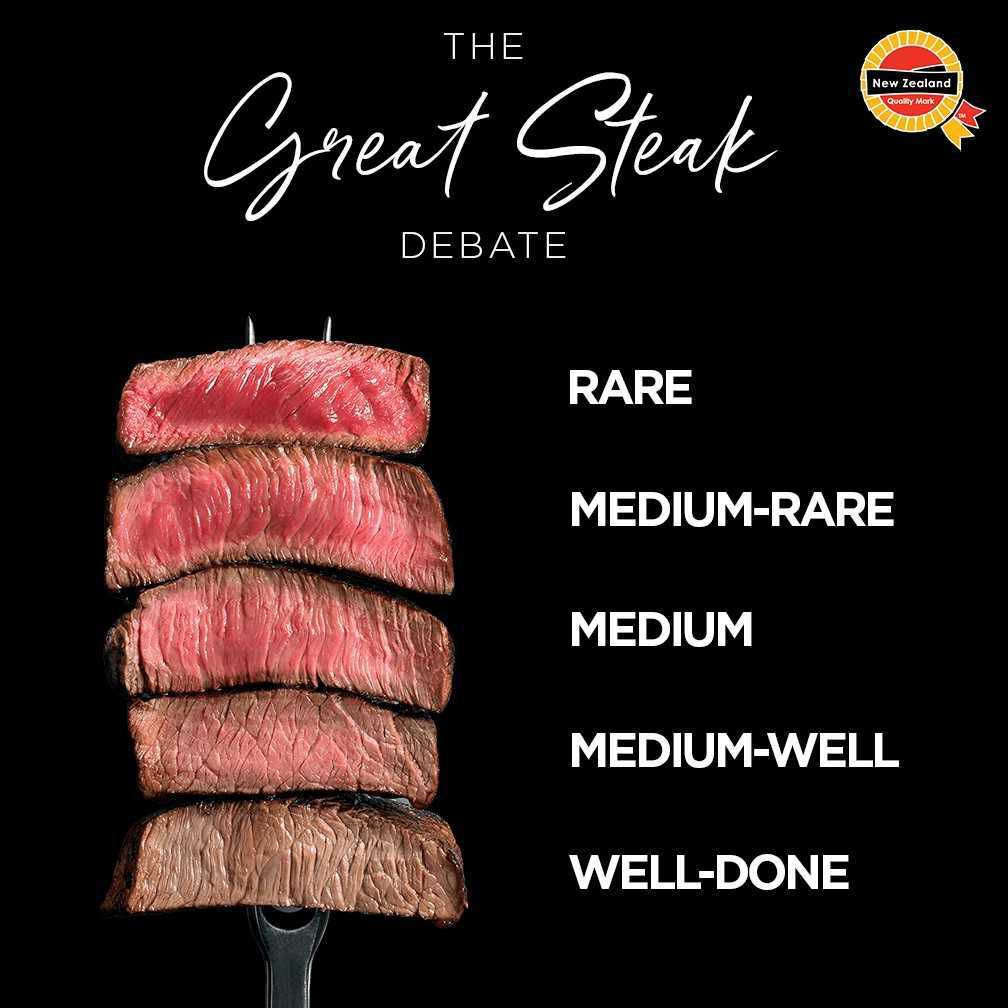
Well Done Steak Medium Rare delantalesybanderines
Doneness. Doneness is a gauge of how thoroughly cooked a cut of meat is based on its color, juiciness, and internal temperature. The gradations are most often used in reference to beef (especially steaks and roasts) but are also applicable to other types of meat. Gradations, their descriptions, and their associated temperatures vary regionally.
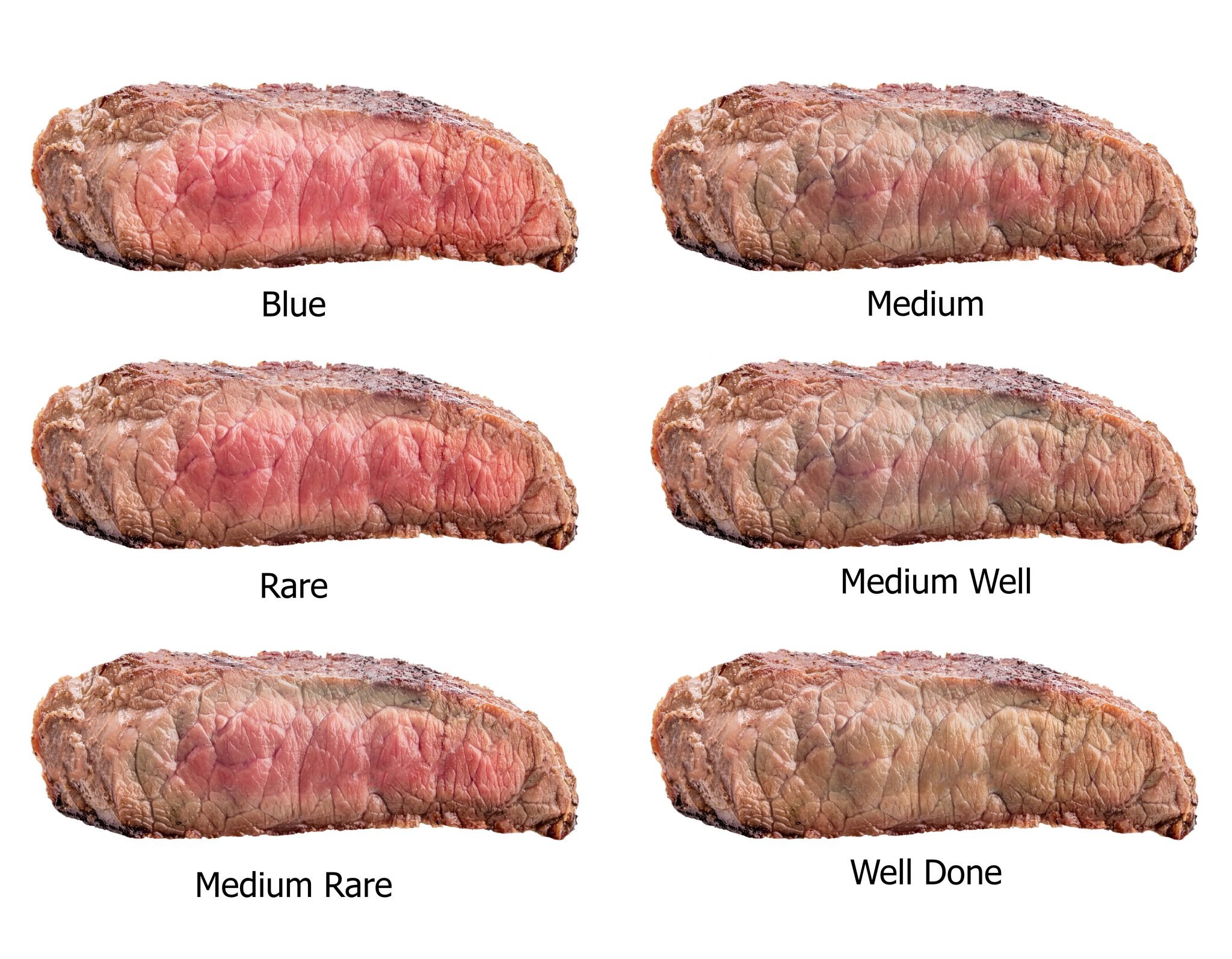
Raw steaks frying degrees rare, blue, medium, medium rare, medium well, well done Rohlík bloguje
Medium Rare Warm red center 135 ° F 57 ° C Medium Warm pink center 145 ° F 63 ° C Medium Well Slightly pink center 150 ° F 66 ° C Well Done Little or no pink 160 ° F 71 ° C Make the best roast, get the Roast Perfect app. Roast Perfect App You need the right tools to check beef doneness. Order Now Grilling, Braising or Broiling Steaks and Burgers

Steak Doneness Guide Temperatures, Tips, and Timing The Kitchn
Always measure the temperature at the centre of your beef cut, regardless of its size. Many modern meat thermometers feature degree-of-doneness temperatures on their displays. However, we recommend the following temperatures for perfect results: Rare 60°C. Medium rare 60-65°C. Medium 65-70°C. Medium well done 70°C. Well done 75°C.
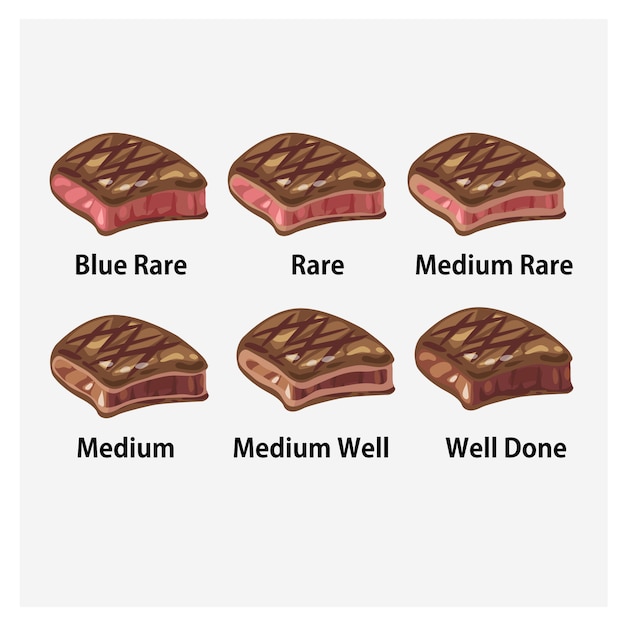
Premium Vector Steak doneness illustration set. blue rare, rare, medium rare, medium, medium
Medium Rare: Internal temperature: 130-135°F Center color: pink Medium: Internal temperature: 135-145°F Center color: some pink Well: Internal temperature: 145-155°F Center color: sliver of some pink Well Done: Internal temperature: 155-165°F Center color: mostly brown What Have You Done! Internal temperature: 165°F+ Center color: brown throughout
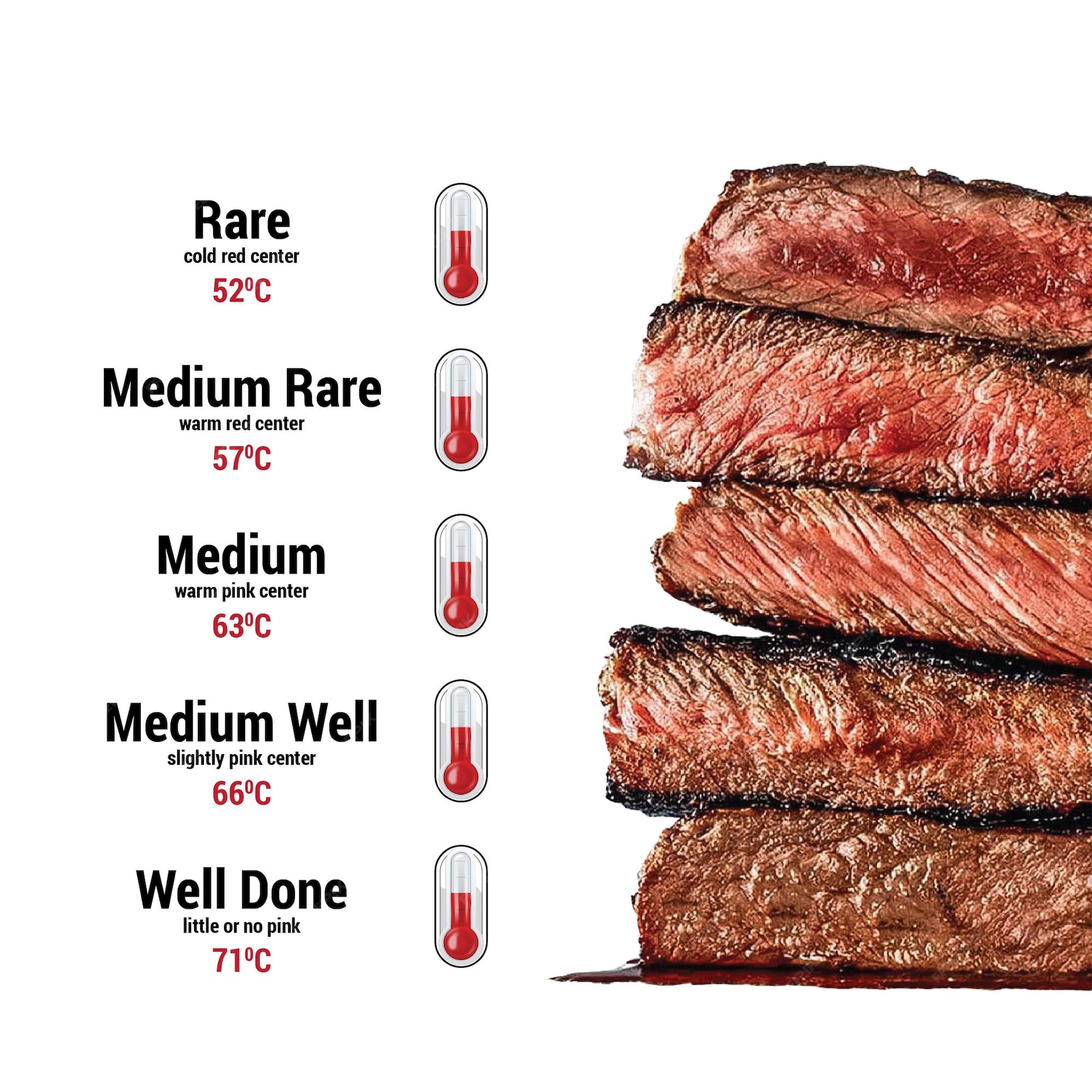
Premium Photo Meat cooking levels.rare,medium rare,medium,medium good,well done.the degree of
While you might think that cooking a steak to a specific doneness requires serious technical skills, with the proper tools and a little bit of patience, learning how to cook a steak until it's rare, well-done, or anything in between is a simple task. Plus, there's an easy trick you can use if you don't have a meat thermometer handy.
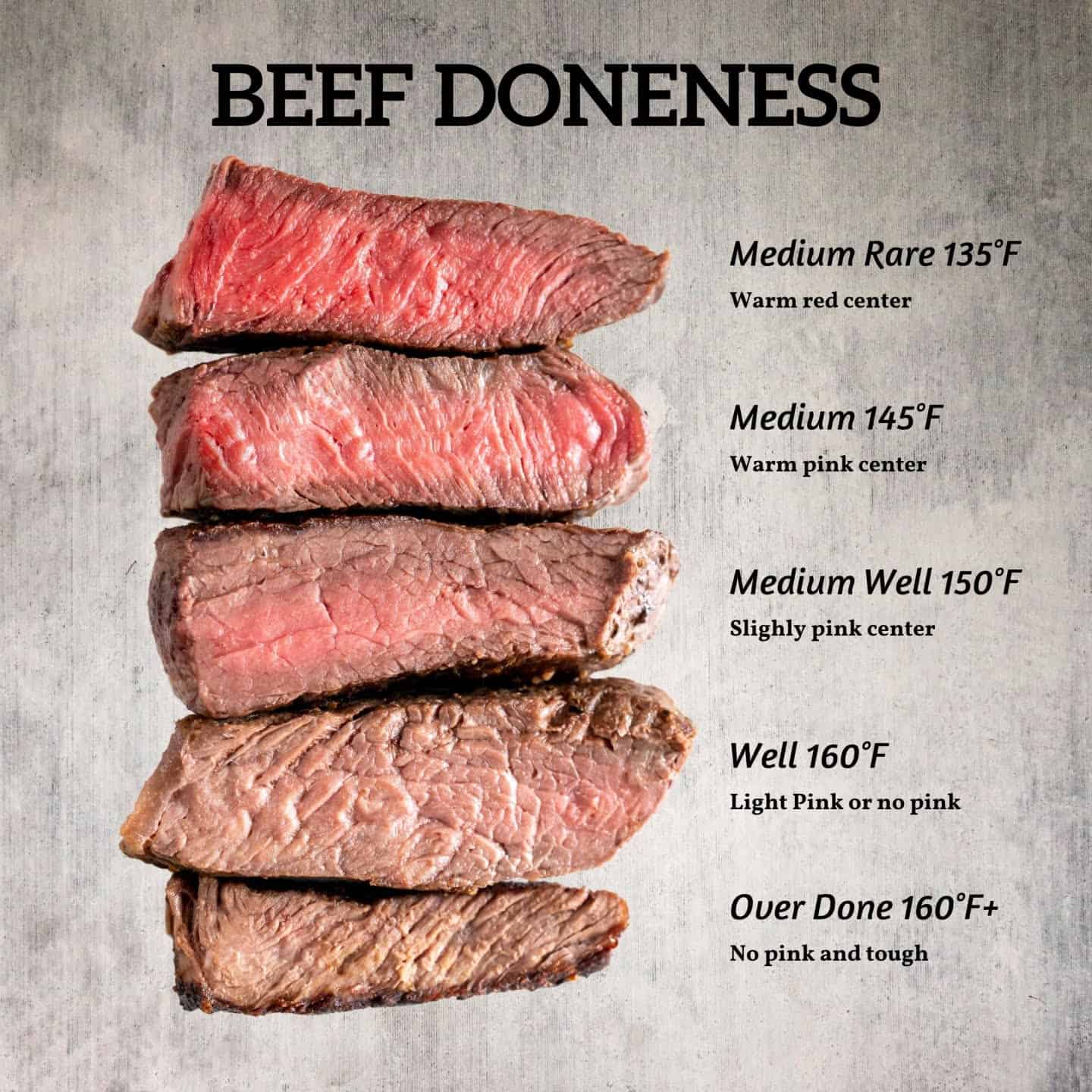
Beef Internal Temperature Degree of Doneness
Rare Meat Rare is the lowest level of doneness when it comes to steaks and burgers. Diners who like extremely tender, flavorful cuts of meat will choose this option. Rare meat has an internal temperature of 125 degrees Fahrenheit. If you order your food rare, the central portion of the meat will be a bright red color.

Medium Rare Steak Vs Well Done
Rare (120°F): A rare steak should have a cool, bright red, center, browned outside and the meat should be almost as soft and springy as raw meat. Rare is an excellent choice for leaner steak cuts, like tenderloins. This is because the cooking process is so fast it doesn't have time to melt all the fat in the meat.
:max_bytes(150000):strip_icc()/steak-doneness-from-rare-to-well-336362-03-8f1d80cb11c6489ebb0891ef9e7fa8aa.jpg)
Your Guide to Steak Doneness Guide From Rare to WellDone
Whether you're a fan of rare, medium, or well-done beef, these tips will guide you to cook your beef just the way you like it. USDA Recommendations for Beef Doneness Following the recommendations of the USDA ( United States Department of Agriculture) will help keep you safe when consuming meat by preventing foodborne illnesses.
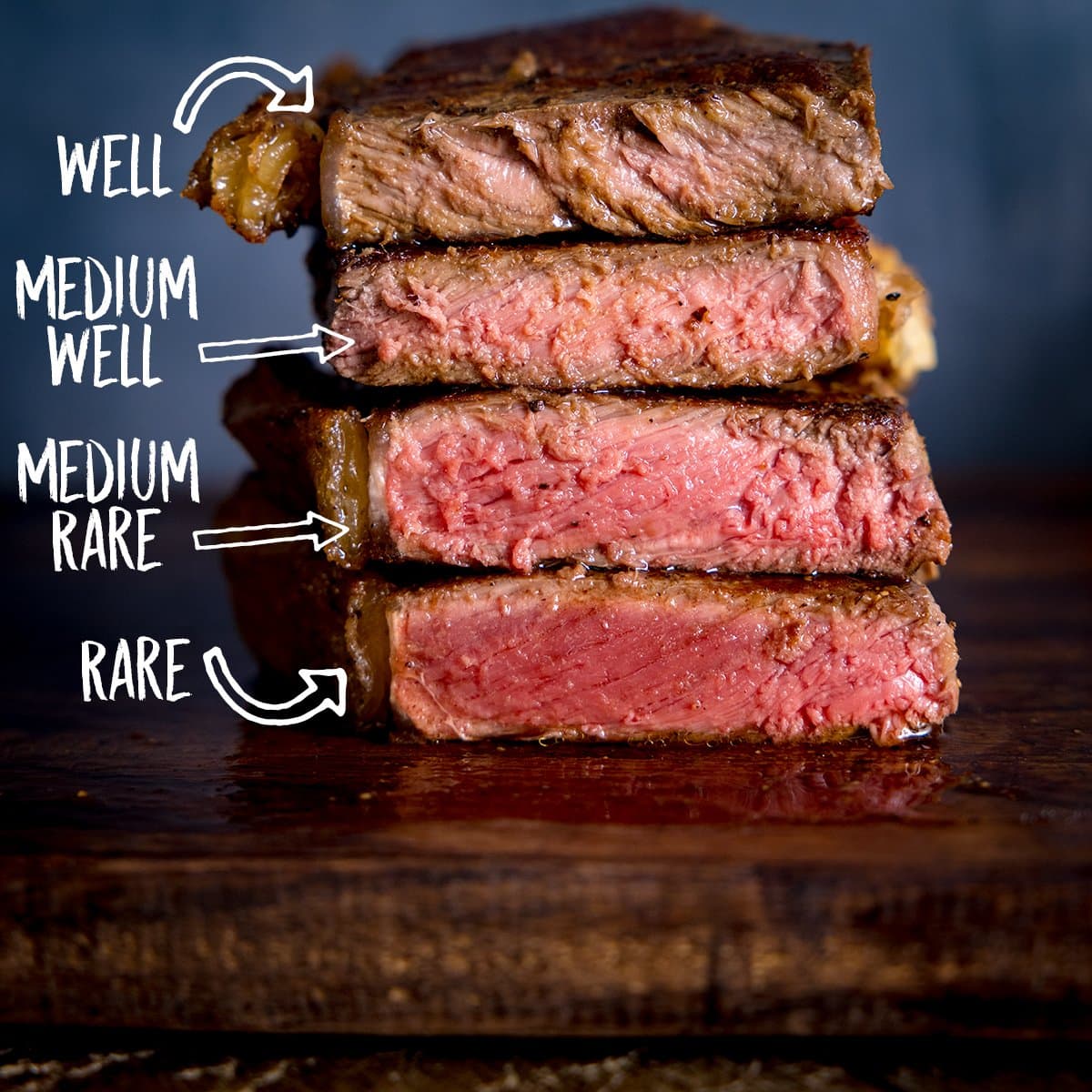
How To Cook A Fillet Steak Medium Rare Cake Baking
A 1-inch thick steak should cook for about seven minutes on one side and five minutes on the second side. Medium-well steaks are drier and less flavorful than those cooked for less time. Well-done. A well-done steak has no pink in the middle and is solid to the touch. It should reach a temperature of 170 F and cook for about 10-12 minutes per side.
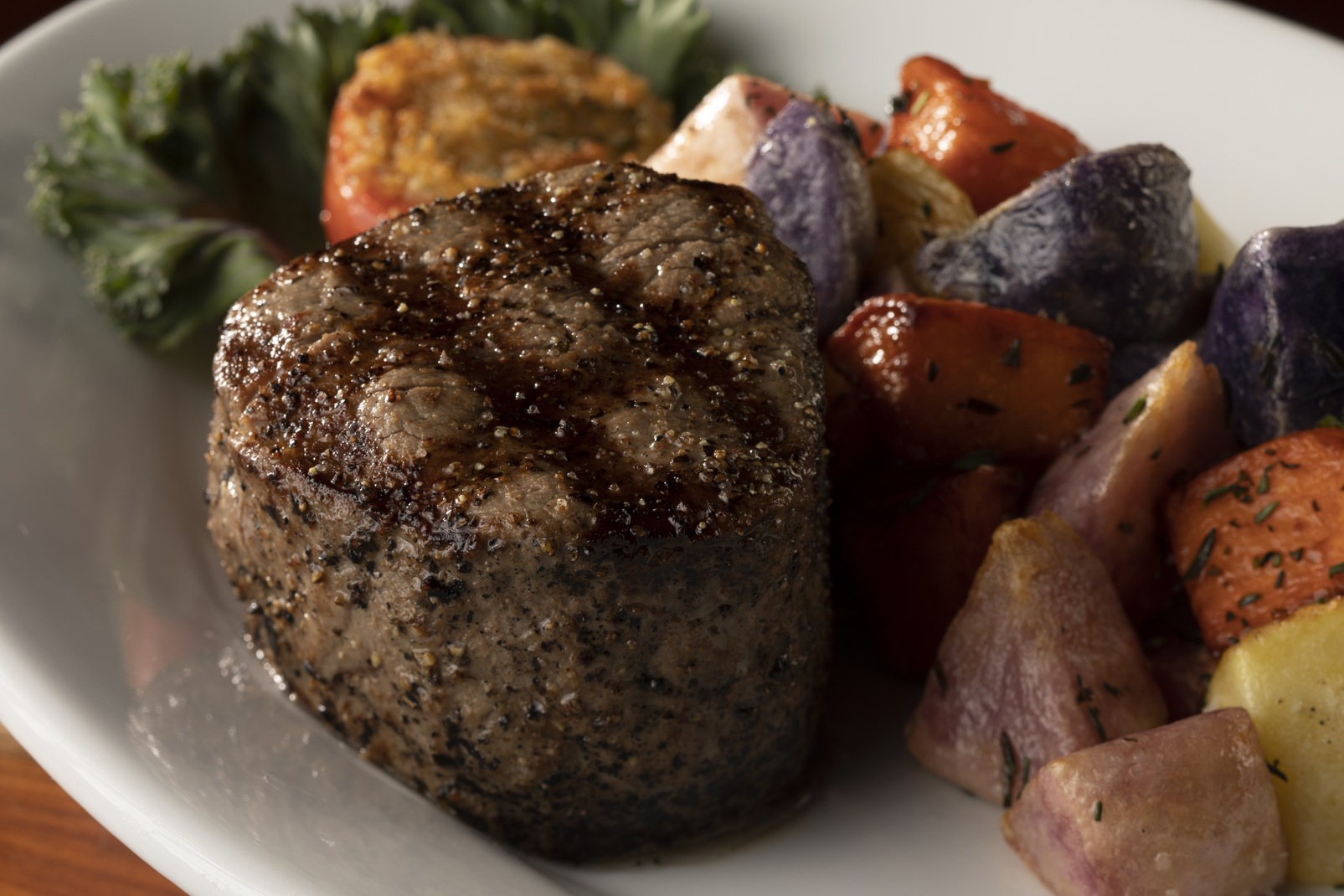
Rare, Medium, and WellDone Everything You Need to Know
So all but the leanest of steaks should be taken to at least medium rare for most people. Your target internal temperature is 130 °F to 140 °F (54 °C to 60 °C), with a beautiful, deep brown sear. Cutting into a medium-rare steak exposes nearly equal-sized stripes — light pink at the top and bottom and a darker pink across the middle.
Medium Rare Steak Vs Well Done
Steak doneness. Everyone has their own interpretation and opinion on the correct degree of doneness, from rare to well done and everything in between. But with such small differences in temperature, you really need to pay close attention so that you don't miss the window between a perfectly cooked and overcooked piece of meat.
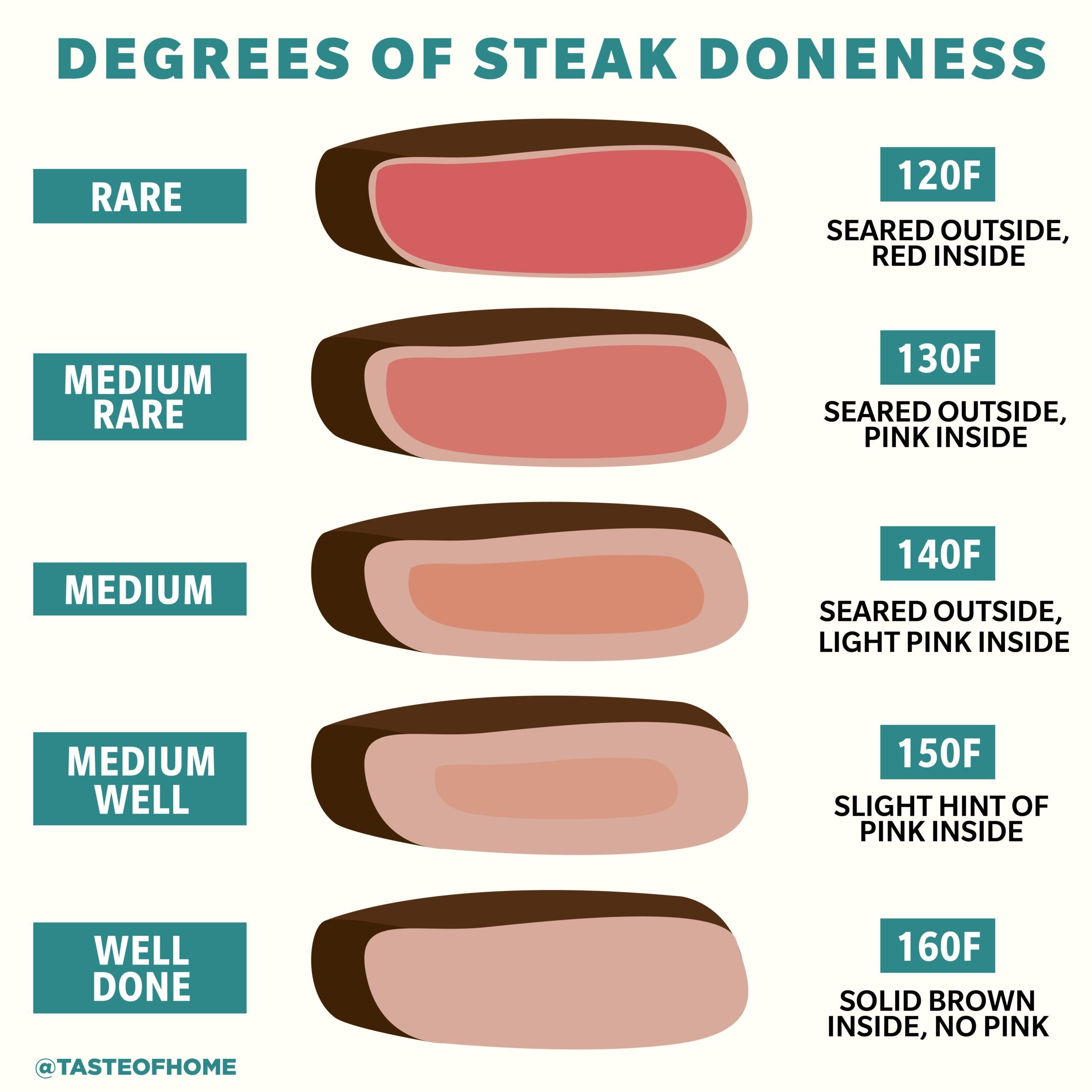
How to Cook MediumRare Steak Perfectly (Tips, Tricks and More)
Recipes Rare, Medium, And Well-Done: Which Is Best? Kristie Collado | Sept. 16, 2014 12:31 pm EST Rib Eye. This super flavorful and super juicy cut of prime rib is tender when it's cooked to no more than medium doneness. Rib eye is best when it's cooked medium-rare; that's about 6-8 minutes for a 1-inch-thick steak.
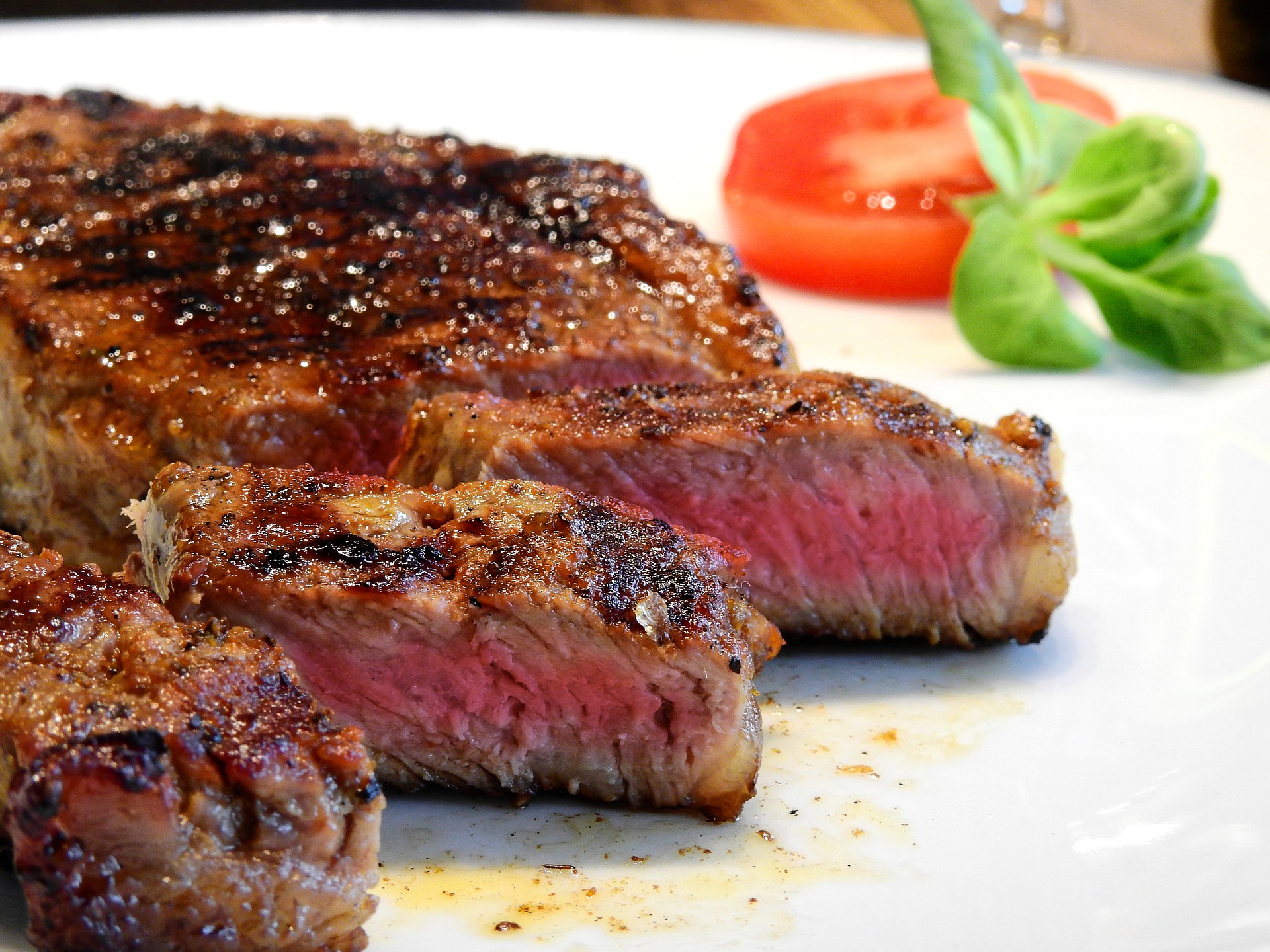
WellDone, Medium, And Rare Steak Do You Know The Difference?
Medium Cook on one side until moisture is pooling on top surface. Turn only once. Cook on second side until moisture is visible. Steak will be cooked to medium when it feels springy with blunt tongs. A meat thermometer will show the internal temperature of a medium steak as 140-150°F (60-65°C).
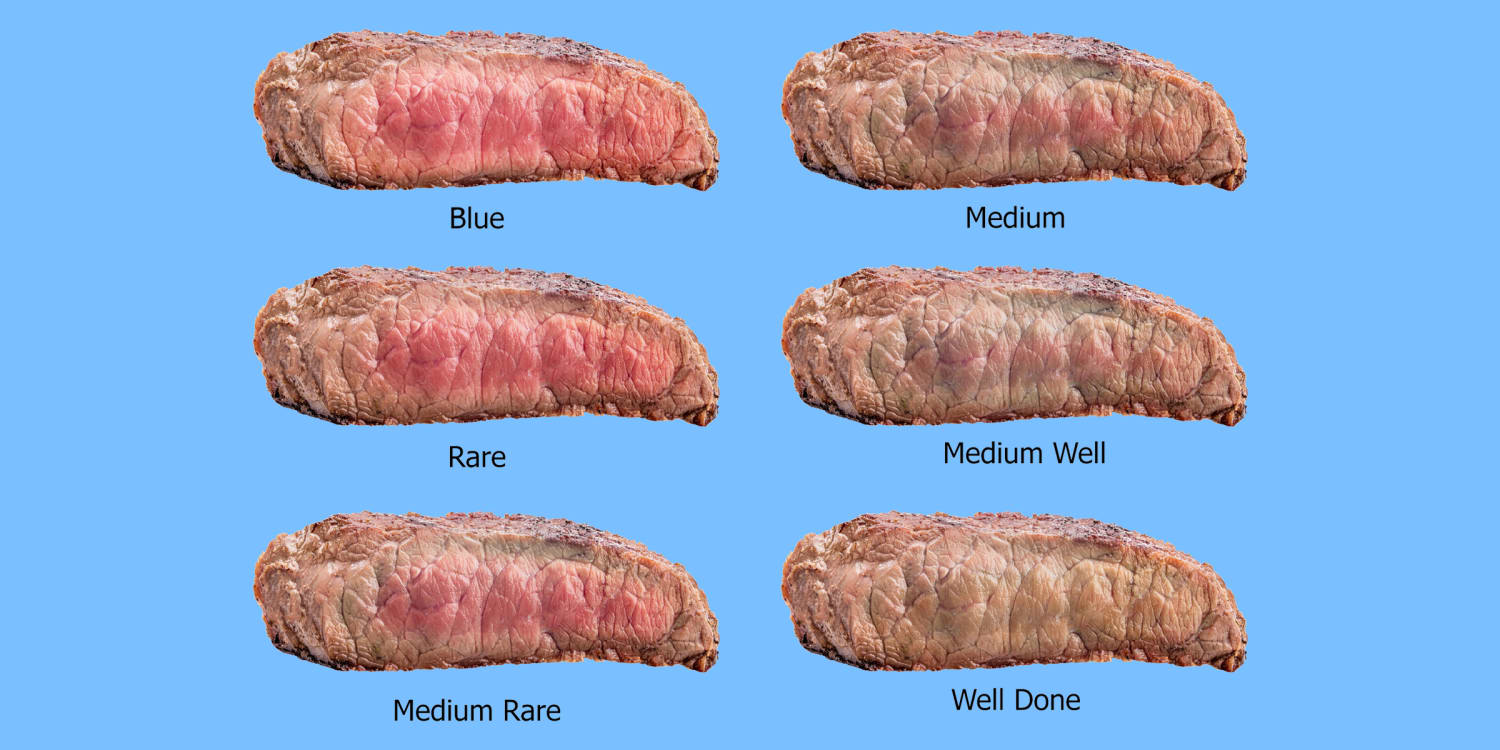
Medium Rare Steak Vs Well Done
Medium-rare steak is warm with a pink-to-red center. This steak is usually soft and juicy on the inside, and firm on the outside. Medium-rare steaks should be cooked for about 3.5 minutes on each side. When cooking a medium-rare steak, you need to strive to achieve half pink and half brown inside. The result is a steak with the perfect amount.
/steak-doneness-from-rare-to-well-336362-hero-01-55cd6d6c83b844cc8a920d6cf2a20dc9.jpg)
Well Done Steak Medium Rare delantalesybanderines
Medium Rare: 130°F to 135°F (54°C to 57°C) Medium: 140°F to 145°F (60°C to 63°C) Medium Well: 150°F to 155°F (65°C to 68°C) Well-Done: 160°F and above (71°C and above) Check multiple spots: For larger steaks, it's a good idea to check the temperature in a few different spots to ensure even cooking throughout the meat.